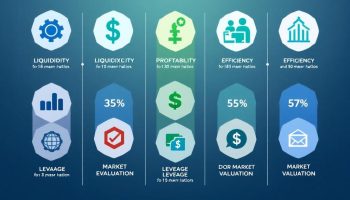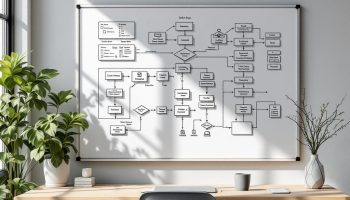
Real-Time Customer Segmentation: A Dynamic Approach
Real-time customer segmentation enables businesses to dynamically group customers based on their behaviors, preferences, and interactions as they occur across digital touchpoints. This powerful approach transforms static customer classifications into fluid, responsive segments that reflect immediate customer needs and intentions, allowing for precisely targeted engagement at critical decision points.
How Real-Time Customer Segmentation Drives Business Growth
Real-time customer segmentation changes how companies connect with their audience by enabling immediate, relevant responses to customer behavior. Instead of relying on outdated demographic profiles, you can leverage live interaction data to deliver personalized experiences exactly when customers are most receptive.
This capability improves conversion rates and customer satisfaction while optimizing marketing spend across channels. For businesses looking for a competitive advantage, real-time customer segmentation provides the agility to recognize shifting customer needs instantly, turning routine interactions into revenue opportunities.
Real-time segmentation fosters deeper brand loyalty through experiences that feel individually crafted. By implementing effective real-time customer segmentation, you’ll respond to customer signals as they happen rather than after the fact.
The immediacy of this approach lets you capture opportunities that traditional segmentation methods miss. Your marketing becomes more efficient because you’re directing resources toward customers actively showing interest or intent, rather than broad demographic groups that might contain uninterested prospects.
Real-Time Customer Segmentation: Transforming Your Marketing Approach
Real-time customer segmentation can revolutionize your marketing strategy by creating dynamic customer groups based on immediate behaviors and preferences. This approach shifts your marketing from static campaigns to responsive engagement that connects with customers at critical moments in their journey. Through real-time data analysis, you’ll deliver personalized experiences that boost conversion rates and enhance customer satisfaction.
Effective real-time segmentation directly supports key business goals like increasing revenue and extending customer lifetime value. When properly set up, real-time segmentation lets you instantly react to behavior triggers, build dynamic profiles that update with each customer interaction, and customize digital experiences on demand. This creates opportunities for precise marketing at decision-making moments.
The right real-time customer segmentation strategies will maximize your business results and transform how you connect with your audience. These approaches don’t just sort customers—they create meaningful engagement that drives loyalty and growth.
1. Define Clear Segmentation Goals and KPIs
Setting concrete objectives for your real-time customer segmentation strategy is essential for driving meaningful results. You need to establish specific goals that align directly with your organization’s broader business objectives before implementing any segmentation technology. Real-time customer segmentation allows you to dynamically group customers based on their behaviors, preferences, and interactions as they occur.
Start by identifying what you want to achieve through segmentation – whether it’s increasing conversion rates, improving customer retention, or enhancing personalization. Connect these segmentation metrics to your broader business KPIs such as revenue growth, customer lifetime value, or reduced acquisition costs. This alignment ensures your segmentation efforts contribute directly to business outcomes that matter.
Determine concrete measurement methods for evaluating segmentation success. Consider metrics like:
- Segment-specific conversion rates
- Engagement levels per segment
- Revenue generated from targeted segments
- Customer satisfaction scores by segment
By establishing clear critical success factors upfront, you create a framework for evaluating your segmentation strategy’s effectiveness and making data-driven improvements over time.
2. Implement Real-Time Data Collection Infrastructure
Building a robust foundation for real-time customer segmentation begins with implementing the right data collection infrastructure. Customer Data Platforms (CDPs) serve as the central nervous system of your segmentation strategy by unifying disparate data sources into cohesive customer profiles. When properly configured, these platforms enable you to capture and analyze customer interactions as they happen across multiple channels.
Deploy comprehensive event-tracking capabilities across all your digital touchpoints to monitor customer behavior in real time. This includes tracking website visits, app interactions, purchase history, and engagement with marketing communications. Each interaction provides valuable insight into customer preferences and intent that can be used for immediate segmentation adjustments.
As you build your data analytics infrastructure, ensure appropriate data governance and privacy compliance measures are in place. Real-time customer segmentation requires significant data collection, but this must be balanced with respect for customer privacy and adherence to regulations like GDPR and CCPA. Implement consent management tools and create transparent data policies to maintain customer trust while maximizing the utility of your segmentation capabilities.
Expert Insight: Implementing a robust data collection infrastructure is crucial for real-time customer segmentation. Utilize Customer Data Platforms to unify data sources and capture customer interactions across channels, while ensuring compliance with privacy regulations through transparent policies and consent management. This balance enhances segmentation accuracy and fosters customer trust.
3. Leverage Behavioral Triggers for Immediate Engagement
Implementing real-time customer segmentation allows you to respond instantly to user behavior with relevant messaging. By analyzing actions as they occur, you can create automated responses that engage customers precisely when they’re most receptive. Set up trigger-based marketing campaigns that activate when specific behaviors indicate buying intent—such as cart abandonment, product page lingering, or multiple return visits.
For maximum effectiveness, establish threshold behaviors that signal high purchase intent within your real-time customer segmentation system. For example, when a customer views the same product category three times in one session, this might trigger a personalized discount offer. Similarly, active listening to digital signals helps identify when customers need assistance completing a transaction.
These behavioral triggers can include:
- Browsing specific product categories multiple times
- Adding items to cart without completing purchase
- Visiting pricing or comparison pages
- Engaging with educational content about products
- Demonstrating hesitation at checkout
When properly configured, behavioral triggers transform passive browsing into active engagement opportunities, boosting conversion rates through timely interventions based on your real-time segmentation data.
Expert Insight: Leverage real-time customer segmentation by setting up trigger-based marketing campaigns that respond to specific behaviors, like cart abandonment or repeated product views. Timely, personalized messaging can convert passive browsing into active engagement, significantly increasing conversion rates as customers feel supported and recognized at pivotal moments.
4. Develop Dynamic Customer Profiles
Creating dynamic customer profiles is a cornerstone of effective real-time customer segmentation. You need profiles that evolve automatically as customers interact with your brand across various touchpoints. These living profiles should incorporate both historical purchase data and real-time behavioral signals to provide a complete view of each customer.
When implementing real-time customer segmentation, ensure your profiles can adapt based on recent activities. For example, a customer who previously fit into your “occasional shopper” segment might suddenly display behaviors indicating they’re ready to become a “high-value customer.” Your segmentation system should recognize these shifts immediately.
The most effective dynamic profiles include:
- Interaction history across all channels
- Purchase patterns and frequency
- Content engagement metrics
- Response rates to previous communications
- Real-time browsing behavior
By building comprehensive dashboards that display these dynamic profiles, your marketing team can quickly identify opportunities for personalized engagement. Your segment classifications should automatically adjust as customer behavior changes, allowing for timely, relevant communications that match their current needs rather than their historical patterns.
Expert Insight: Develop dynamic customer profiles that automatically update based on real-time interactions and historical data. This ensures your segmentation captures shifts in customer behavior, enabling timely and relevant engagement. By leveraging comprehensive dashboards, your marketing team can quickly identify personalized opportunities, enhancing customer relationships and maximizing impact.
5. Personalize Digital Experiences On-the-Fly
Implementing real-time customer segmentation allows you to transform static websites into dynamic experiences that respond instantly to visitor behavior. As customers interact with your digital properties, you can adjust content elements based on their actions and preferences. This approach requires integrating segmentation tools with your content management system to display relevant product recommendations while customers browse different categories.
By analyzing browsing patterns, you can modify UX elements to match segment preferences—showing simplified navigation for new visitors or advanced features for power users. For instance, B2B customers might see case studies prominently displayed, while price-sensitive segments could receive special offer notifications.
Consider these implementation approaches:
- Use API connections between your customer database analytics platform and website
- Implement JavaScript tags for real-time content swapping
- Create segment-specific content variations for key landing pages
Personalization extends beyond your website to email communications and mobile experiences. When properly executed, customers receive a cohesive experience that feels tailored specifically to their needs, significantly improving engagement metrics and conversion rates across all digital touchpoints.
Expert Insight: To enhance digital experiences, implement real-time customer segmentation that adjusts content based on visitor behavior. Utilize API connections for data integration, employ JavaScript for dynamic content swapping, and create tailored landing pages. Personalization fosters engagement and drives conversions by delivering a cohesive, relevant experience across all digital platforms.
6. Deploy Micro-Moment Marketing Campaigns
Real-time customer segmentation shines brightest when applied to micro-moment marketing campaigns. By identifying precisely when customers are making decisions, you can deliver perfectly timed messages that match their immediate needs. These crucial moments occur throughout the customer journey, from initial research to final purchase consideration.
Start by analyzing your customer data to identify key decision points where real-time segmentation can make the biggest impact. For example, when a high-value segment member abandons their cart, your system can immediately trigger a personalized incentive based on their specific preferences and past purchase history.
Create segment-specific messaging templates that can be dynamically populated with personalized content elements when triggered. Different segments require distinct approaches—price-sensitive customers might respond to limited-time discounts, while convenience-focused segments prefer messaging about easy fulfillment options.
To implement effective micro-moment campaigns, you need:
- Fast-acting trigger systems that identify segment-specific opportunities
- Pre-approved messaging frameworks that can deploy without delay
- Automated workflows that respond instantly to customer signals
- Clear performance metrics to measure campaign effectiveness
Develop rapid response capabilities by creating dedicated workflows for each high-value segment. This approach ensures that when opportunities arise, your marketing system can execute the right action without unnecessary delays in your real-time customer segmentation strategy.
7. Integrate Predictive Analytics for Proactive Segmentation
Implementing real-time customer segmentation becomes significantly more powerful when combined with predictive analytics. By analyzing historical patterns alongside current behaviors, you can anticipate customer needs before they express them. Machine learning algorithms can identify subtle signals indicating when customers are likely to shift between segments, allowing you to prepare targeted interventions.
Propensity modeling is particularly valuable in real-time customer segmentation efforts. This approach helps identify which customers have the highest likelihood of converting, upgrading, or responding to specific offers. For example, you can build models that recognize patterns indicating a customer’s readiness to purchase premium services, enabling proactive segment-based targeting.
The early detection of churn signals represents another critical application. By monitoring indicators like:
- Decreased engagement frequency
- Reduction in feature usage
- Changes in browsing patterns
- Shorter session durations
- Fewer interactions with marketing communications
You can identify at-risk customers and implement retention strategies before they actively consider leaving. This predictive capability transforms your segmentation from purely reactive to strategically proactive, significantly enhancing your customer lifecycle management.
8. Establish Cross-Channel Coordination
Implementing real-time customer segmentation requires seamless coordination across all your marketing channels. You need to synchronize segmentation data between platforms to maintain a unified customer view. When a customer moves from browsing your mobile app to visiting your website, their segment identification should travel with them, ensuring consistent messaging.
To achieve effective cross-channel coordination, consider these approaches:
- Create a centralized data repository that feeds segment information to all channels
- Implement API connections between your marketing technologies for instant data sharing
- Develop segment translation rules that maintain consistency across different platforms
- Use customer identity resolution to track individuals across devices and touchpoints
The power of real-time customer segmentation truly shines when you collaborate across departments to create consistent experiences. Marketing, sales, and customer service teams should access the same segmentation data to deliver cohesive messaging. Implement technologies that enable real-time segment sharing between your CRM, email platform, ad networks, and website personalization tools.
Remember that customers expect consistency as they navigate between channels. By establishing robust cross-channel coordination, you prevent the frustration caused by disjointed experiences while maximizing the effectiveness of your segmentation strategy.

9. Test and Optimize Segment Responses
Effective real-time customer segmentation requires ongoing refinement through systematic testing. You should implement regular A/B testing to compare how different segment treatments perform against each other. For example, test whether high-value customers respond better to exclusive offers or personalized recommendations.
When measuring results, focus on segment-specific metrics rather than overall performance. Each segment may have different conversion patterns and engagement behaviors unique to their characteristics. By examining these metrics separately, you can identify which segments provide the highest ROI and which need strategic adjustments.
The performance data you collect should directly feed back into your segmentation models. Use this information to:
- Adjust segment boundaries when customers don’t behave as expected
- Refine messaging when certain content types show higher engagement
- Reallocate resources to high-performing segments
- Merge underperforming segments or create new ones based on emerging patterns
Remember that real-time customer segmentation is never complete. Continuous improvement through regular testing cycles ensures your segmentation strategy evolves alongside changing customer behaviors. Consider implementing automated testing workflows that can make micro-adjustments to segment parameters based on performance indicators.
Real-time customer segmentation enables businesses to dynamically group customers based on their behaviors, preferences, and interactions as they occur, allowing for immediate, personalized responses to customer actions. By analyzing customer data in the moment, organizations can deliver targeted experiences that increase conversion rates, improve retention, and enhance overall customer engagement across multiple touchpoints.
Real-time customer segmentation is essential for modern enterprises seeking to create personalized customer experiences that drive measurable business outcomes. In today’s competitive marketplace, where customers expect immediate relevance, this approach allows companies to respond instantly to behavioral triggers, optimize marketing spend by focusing on high-value segments, and create cohesive cross-channel experiences that significantly improve conversion rates and customer lifetime value.
Maximizing Your Customer Segmentation Strategy
Real-time customer segmentation transforms how businesses engage with customers by enabling dynamic, personalized experiences based on immediate behavior patterns. This approach combines powerful data collection infrastructure with automated response systems to deliver relevant content exactly when customers need it. The strategies outlined demonstrate how businesses can move from static demographic groupings to responsive segmentation that adapts continuously to customer actions, significantly improving conversion rates and customer loyalty.
Key Implementation Steps for Effective Real-Time Segmentation
- Define clear segmentation goals that align with broader business KPIs
- Implement robust data collection infrastructure with appropriate privacy controls
- Configure behavioral triggers for immediate customer engagement opportunities
- Develop dynamic customer profiles that evolve with each interaction
- Personalize digital experiences across websites and mobile applications
- Create micro-moment marketing campaigns for key decision points
- Integrate predictive analytics to anticipate customer needs proactively
- Establish cross-channel coordination for consistent customer experiences
- Implement regular testing to optimize segment-specific messaging
Frequently Asked Questions
What is the difference between traditional and real-time customer segmentation?
Traditional segmentation relies on historical data and static customer groups, while real-time segmentation continuously updates customer classifications based on immediate behaviors and interactions, allowing for dynamic, responsive marketing actions.
How much data do I need to implement effective real-time segmentation?
You need sufficient data to identify meaningful patterns, but quality matters more than quantity. Focus on capturing high-value behavioral signals across touchpoints rather than amassing vast amounts of undifferentiated data.
What technologies are essential for real-time customer segmentation?
Key technologies include Customer Data Platforms (CDPs), event tracking systems, API connections between marketing tools, and automated decision engines that can trigger actions based on predefined rules or machine learning models.
How can I measure the ROI of real-time customer segmentation?
Track segment-specific metrics like conversion rates, engagement levels, and revenue generated from targeted segments. Compare performance before and after implementation, focusing on improvements in customer lifetime value and acquisition costs.
How do privacy regulations impact real-time customer segmentation?
Privacy regulations like GDPR and CCPA require transparent data collection practices and proper consent management. Implement robust governance frameworks to ensure compliance while still delivering personalized experiences.






